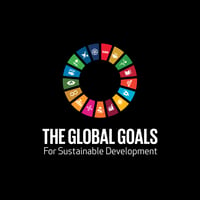BNG ASSESSMENT
Developments and Land Managers in the England are required to show a 10% Biodiversity Net Gain (BNG), Tunley will help to assess the biodiversity of a site to be developed or areas for use as biodiversity units/credits and guide businesses to ensure they meet the 10% Net Gain requirement in England.
WHAT IS BIODIVERSITY NET GAIN?
A Biodiversity Net Gain Assessment assesses the increase in species numbers, genetic variability, and variety in an area. The Biodiversity metric 4.0 looks to measure whether changes to biodiversity caused by a development project or any activities result in a negative, neutral or positive impact and subsequently aids planning for how to achieve the positive 10% Net Gain outcome. This metric measures this in ‘biodiversity units’ and determines both increases and reductions in biodiversity due to the development of the site.
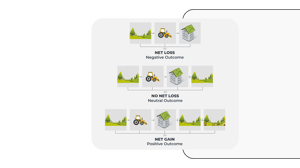
HOW DOES THE BNG REGULATION AFFECT YOUR BUSINESS?
The new BNG regulation came into effect in January 2024 and is part of the Environmental Act 2021 which promotes nature positive change in the UK. It now applies to all developments in England covered by the Town and Country Planning Act 1990, they will be required to assess the current biodiversity value of the natural habitats on-site and produce a plan to ensure that the 10% Net Gain requirement is met once the development or project is complete. To achieve this requirement, you will need to consider how you will contribute to the recovery of nature in the local area in the land development plans.
- 01 Land Managers
- 02 Developers
- 03 Local Planning Authorities
LAND MANAGERS
Land managers are able to sell biodiversity units as well as combining with other land managers to increase the area you have for sale. You are unable to sell units for land that already has plans to be created or enhanced.
DEVELOPERS
Developers must try to avoid loss of habitat to a piece of land you plan to do development work on. If you are unable to avoid this, you must create a habitat either on or off-site. A final resort would be to purchase statutory credits from the government, this requires consultation from an ecologist.
LOCAL PLANNING AUTHORITIES
Local Planning Authorities will have to approve plans before any development is able to start.
HOW WE CAN HELP
We understand the pressing need to safeguard our natural resources and ensure a sustainable future for generations to come. By adopting responsible practices and embracing cutting-edge solutions, we strive to be at the forefront of biodiversity conservation efforts. We will help your business carry out a Biodiversity Net Gain Assessment which is required to meet and deliver a 10% BNG in line with the newest regulation, putting in place a biodiversity net gain plan.
Tunley will take all the data collected regarding the habitats, hedgerows, and watercourses identified in the area, including type, size, condition, and local significance to calculate the baseline number of biodiversity units. This will then inform on where habitats need to be conserved, enhanced or new habitats need to be built in order to meet the 10% BNG requirements.
SCHEDULE A MEETING WITH BIODIVERSITY SPECIALISTS AND DISCUSS YOUR BNG PLAN
LEICESTER COLLEGE RECEIVE A BIODIVERSITY NET GAIN OF 21.11%
Tunley Environmental conducted an independent small site Biodiversity Net Gain Assessment to identify and quantify the biodiversity of the site before and after development. Leicester College, is planning to build a new building and training facility and with the support of Moss Architecture Interiors Ltd, they have been asked to provide evidence of 10% Biodiversity Net Gain (BNG) post-development to obtain planning permission.

STANDARDS AND METHODOLOGIES
This is your opportunity to make a difference in the world, from local to global ecosystems, we must act now to conserve and redevelop biodiversity. What sets us apart is our unwavering dedication to aligning your efforts with the globally recognised Science-Based Targets for Nature and Nature Positive goals.
BIODIVERSITY NO NET LOSS & NET GAIN POLICY
Biodiversity No Net Loss is a conservation and environmental policy concept that aims to ensure that the overall level of biodiversity in a particular area remains at least constant, or ideally increases in the case of BNG, after human activities, such as development or infrastructure projects that have taken place.
The goal is to balance any negative impacts on biodiversity caused by these activities with measures that offset or compensate for the losses. The key principles of Biodiversity No Net Loss and Net Gain are:
Avoid or minimise biodiversity loss by planning development projects in a way that has the least impact on natural ecosystems.
If biodiversity loss is inevitable, efforts should be made to minimise the impact as much as possible through responsible project design and implementation.
When biodiversity is lost, there should be a commitment to restore or rehabilitate ecosystems to their pre-development state or improve their condition.
If it is not possible to fully restore the impacted ecosystems on-site, biodiversity offsets come into play. This involves creating or restoring equivalent or an even higher-quality habitat elsewhere to compensate for the loss.
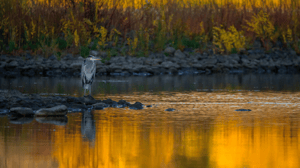
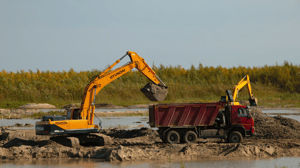
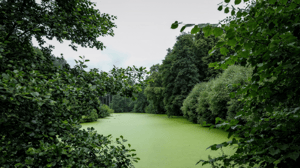
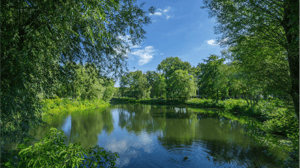
SCHEDULE A MEETING WITH BIODIVERSITY SPECIALISTS AND DISCUSS YOUR BNG PLAN
OTHER RELATED SERVICES
With these services, you not only gain valuable insights into your business's impact on the environment but also actively contribute to the greater mission of conserving biodiversity and ensuring a harmonious coexistence between industry and nature.Through our Nature Positive Pathways service, we guide organisations from commitment to credible, measurable outcomes, ensuring alignment with global standards and full CSRD Biodiversity Compliance.
Read MoreALL THINGS NATURE
How PAS 2080 Standard Implementation Supports Nature-based Solutions
Understanding the New ISO 17298:2025 Biodiversity Standard
Science Based Targets for Nature Guidance for Corporate Sustainability
Why Work with a Consultancy for SBTi Alignment?
How Manufacturers Can Lead on Biodiversity Through Supply Chain Action
Corporate Nature Strategy in the UK Healthcare Industry
FREQUENTLY ASKED QUESTIONS
BNG is a legal requirement ensuring that development projects leave biodiversity in a better state than before. It aims to increase the quantity, quality, and resilience of habitats.
A BNG assessment evaluates a site’s biodiversity before and after development, using the DEFRA Biodiversity Metric to quantify impacts and determine how much gain is needed.
Under the Environment Act 2021, most developments in England must achieve at least a 10% net increase in biodiversity compared to pre-development levels, maintained for a minimum of 30 years.
-
- Baseline ecological surveys to map existing biodiversity.
- Applying the DEFRA Biodiversity Metric to calculate units.
- Designing a Biodiversity Net Gain Plan with on-site or off-site enhancements.
- Implementing improvements and establishing long-term monitoring.




